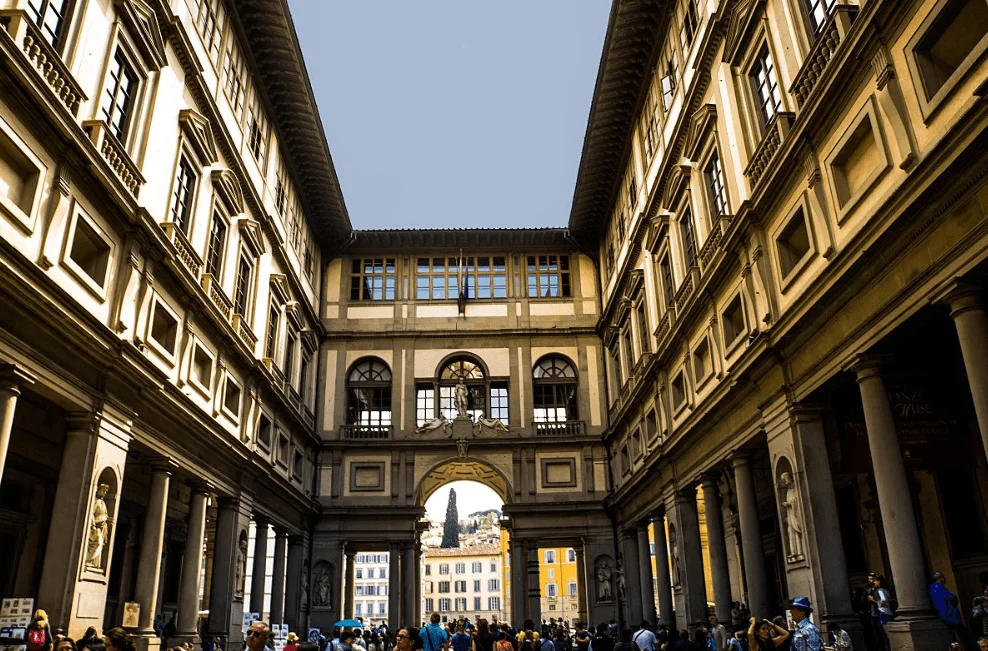This Italian polymath was extremely talented from an early age, and this clearly shows in this magnificent painting.
In this post, we’ll take a closer look at the top 10 interesting facts about the Annunciation by Leonardo da Vinci, an incredible masterpiece created by one of the most famous artists in history!
1. It’s unclear when exactly it was completed
Leonardo da Vinci (1452-1519) was one of the most famous Renaissance artists in history and has been credited with this magnificent painting. It’s assumed it was created anywhere between 1472 and 1475.
Nothing is known about why it was painted and when it was completed, making this painting one of Leonardo’s great mysteries.

2. It’s assumed da Vinci painted it while still in his master’s studio
Because it was presumably completed in the early 1470s, this also means that Leonardo was still in his late teens or early twenties when it was completed, making this masterpiece even more fascinating.
This also means that he was most probably still a pupil in the studio of his master in Florence, Andrea del Verrocchio (1435-1488). It’s also here that in 1475 he painted a smaller version with the Annunciation subject and a painting together with his master called “The Baptism of Christ,” for which he completed the angel on Christ’s left.
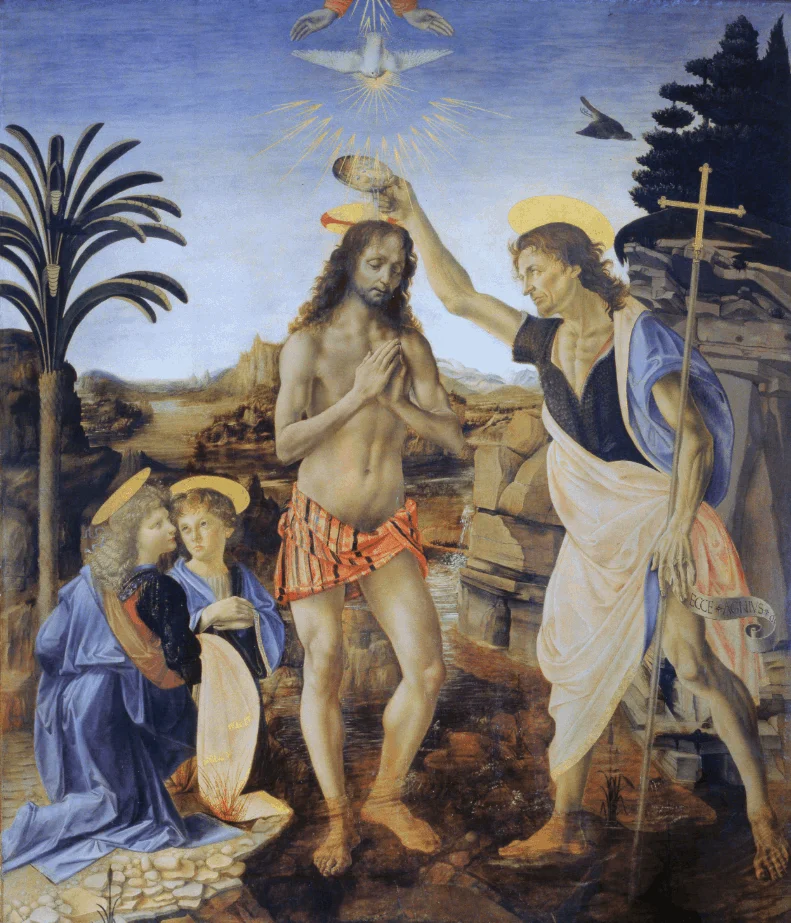
3. It’s a relatively large painting
His smaller painting of the same subject which he painted around the same time had dimensions of 59 x 14 centimeters (23 x 5.5 inches). This clearly emphasizes the difference in size between both works.
The larger painting, for which he used oil and tempera on wood, has dimensions of 98 × 217 centimeters (39 × 85 inches). This also allowed him to really focus on the details in the background which are astounding!
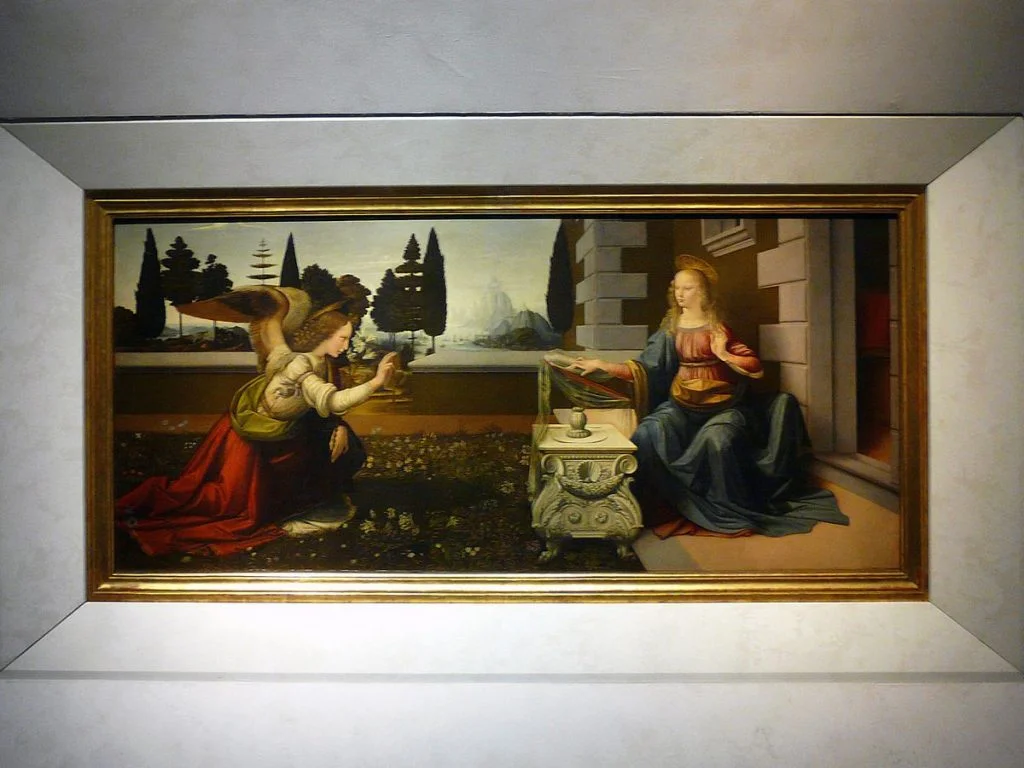
4. It depicts a popular Biblical story
The Annunciation depicts a story drawn from the Bible in the Gospel of Luke 1.26–39. It depicts the moment that the Angel Gabriel tells the Virgin Mary that she will deliver a baby, a son named Jesus, who will be called the “Son of God.”

Mary is seen reading before she is interrupted by the Angel, and the book that she was reading is the Bible, which is depicted with a fascinating level of detail.

5. It wasn’t the first time that the Annunciation was depicted in Florence
It was far from the first time that this theme was depicted in art in Florence at the time, and it’s clear that Leonardo looked for inspiration in works from other artists.
The most striking resemblance can be found in the “Annunciation” painted by Fra Angelico (1395-1455) between 1440 and 1445.
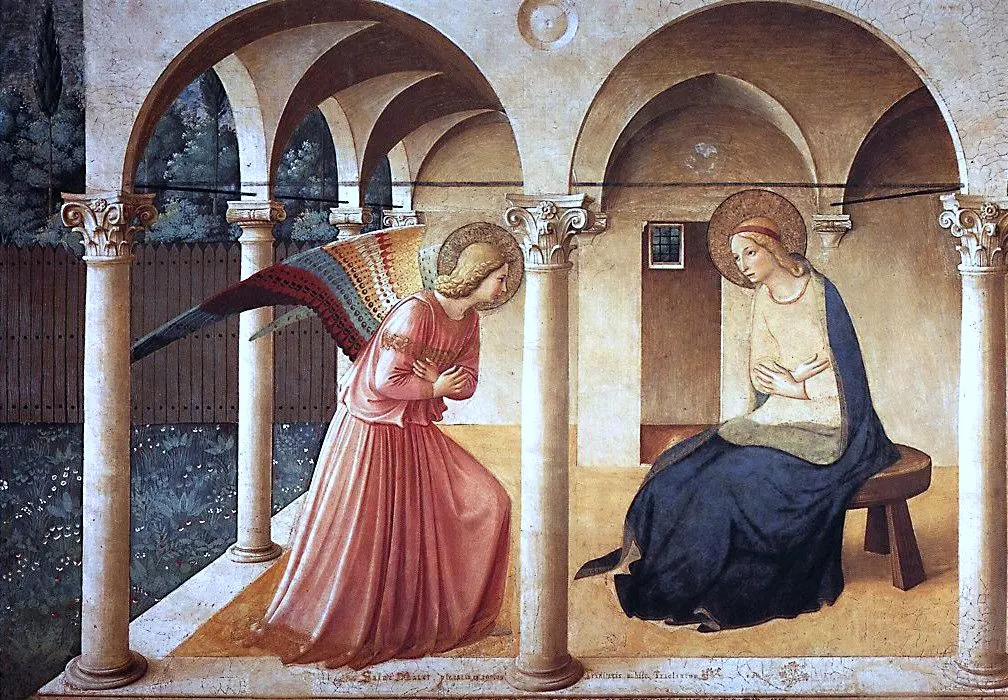
6. The Angel holds a symbol with a double meaning
The angel Gabriel is holding a flower called a “Madonna lily,” a plant in the true lily family that has been cultivated since antiquity for at least 3,000 years.
This flower holds a lot of cultural value and has a double meaning in the painting. It’s both a symbol of Mary’s virginity, as well as the symbol of the city of Florence.
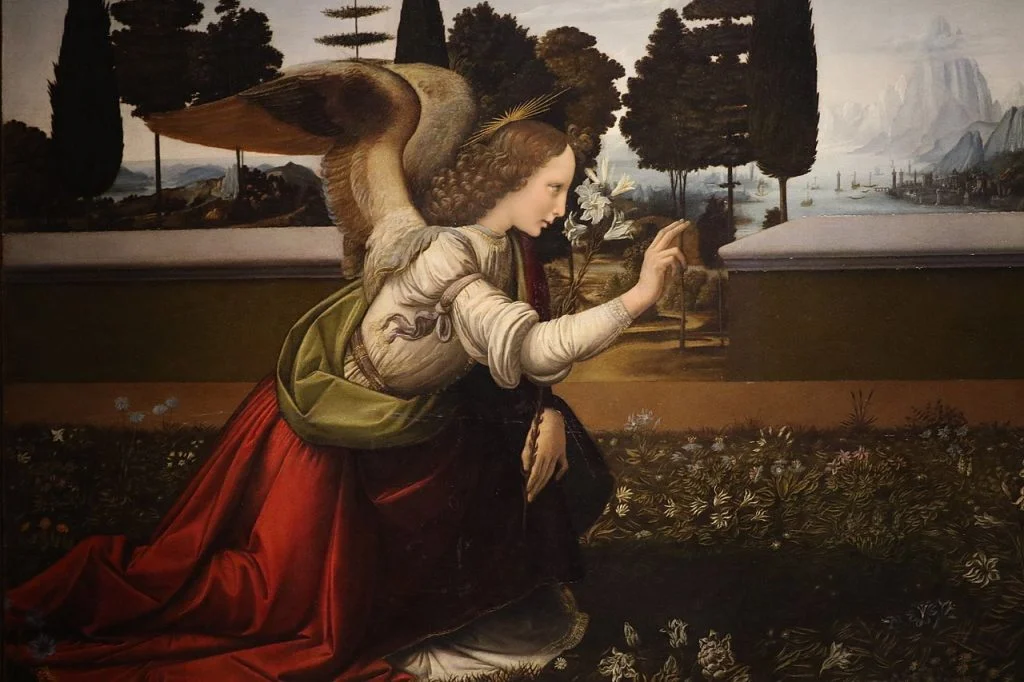
7. Another artist messed with the Angel’s wings
One of the most remarkable facts about the Annunciation by Leonardo da Vinci is that the painting was altered by an unknown artist later on, more specifically the wings of the angel.
The original wings were depicted as wings of a bird in flight, so these have clearly been extended for unknown reasons.
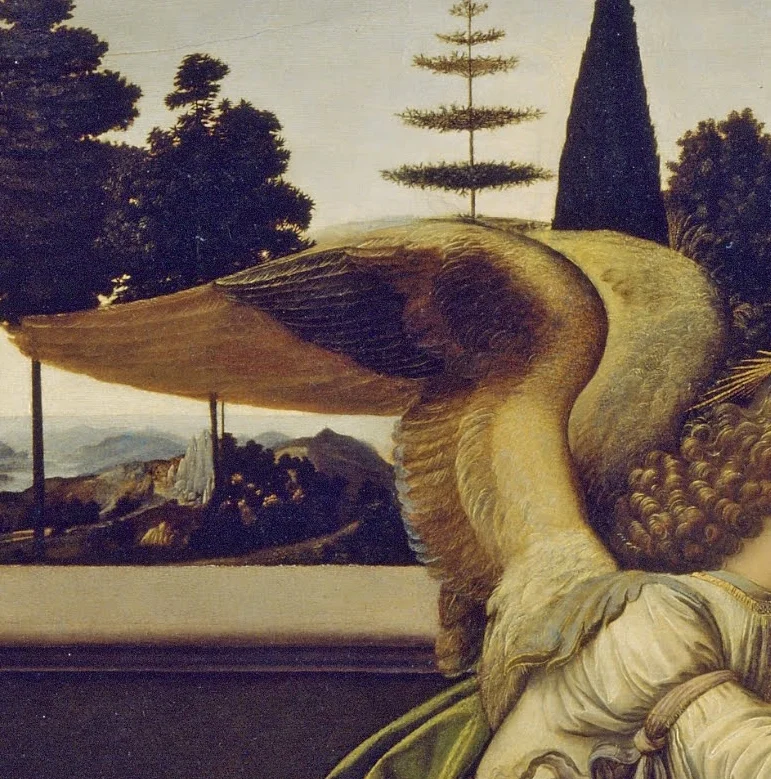
8. Mary’s desk was probably inspired by a Florentine Ruler’s tomb
Leonardo didn’t just get inspiration for the figures from other paintings of the same subject, he also got inspired by an invention of his master Andrea del Verrocchio.
Mary is seen reading on a small desk that has the shape of a lectern. This resembles the shape of the tomb of Piero di Cosimo de’ Medici (1416-1469), a Florentine ruler who was buried in the enormous Basilica of San Lorenzo in Florence.
Verrocchio received the commission to design this tomb and it bears a striking resemblance to Mary’s little reading desk in the painting.
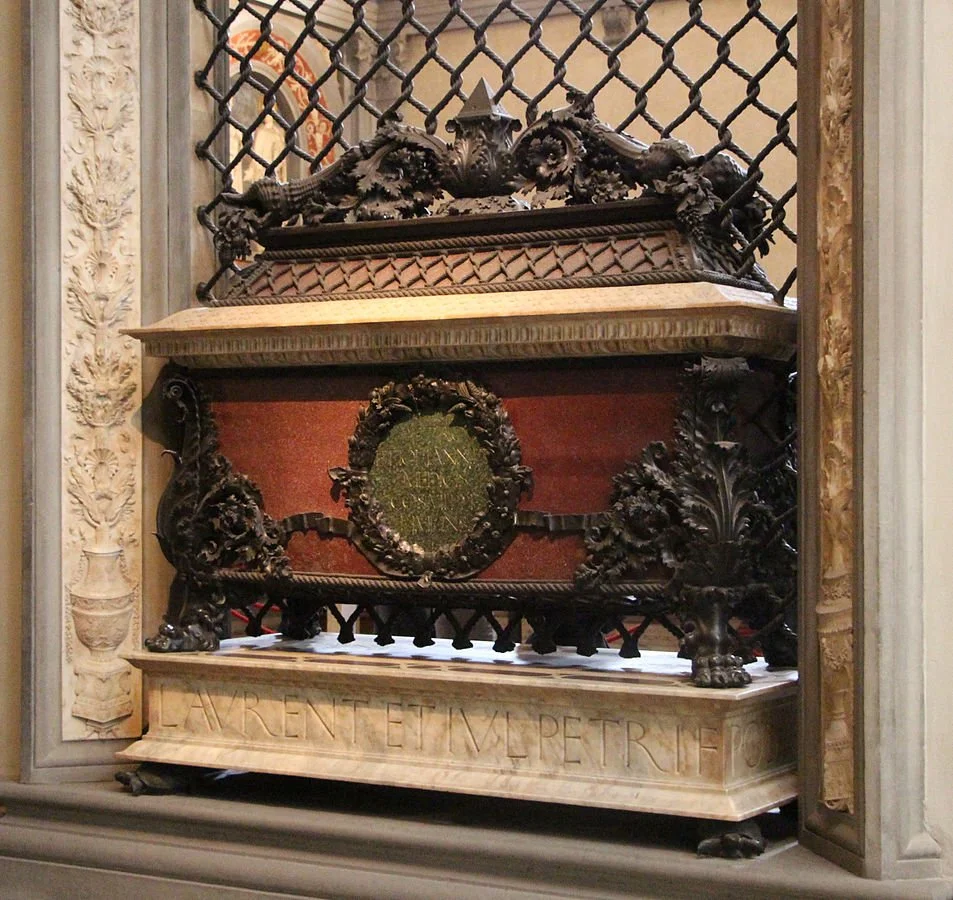
9. The painting was originally credited to another artist
Perhaps one of the most intriguing facts about the Annunciation by Leonardo da Vinci is that it wasn’t until the 19th century that he was actually credited with the work.
This happened in 1869 when Estonian art expert Karl Eduard von Liphart (1808-1891) noted that it very much resembled the work of the young Leonardo.
All the time it was believed that it was a painting created by either Andrea del Verrocchio himself or Domenico Ghirlandaio, another pupil of his at the time Leonardo was in his workshop.

10. It’s on public display in a famous museum in Florence
Von Liphart studied the work after it entered the collection of the Uffizi Gallery in 1867. All the time, it had been hanging in a relatively obscure church called the church of San Bartolomeo a Monteoliveto, which is located just outside Porta San Frediano in Florence.
This means that it has been on public display in one of the most popular museums in the world all this time, and still can be found at the Uffizi Gallery in Florence today!
